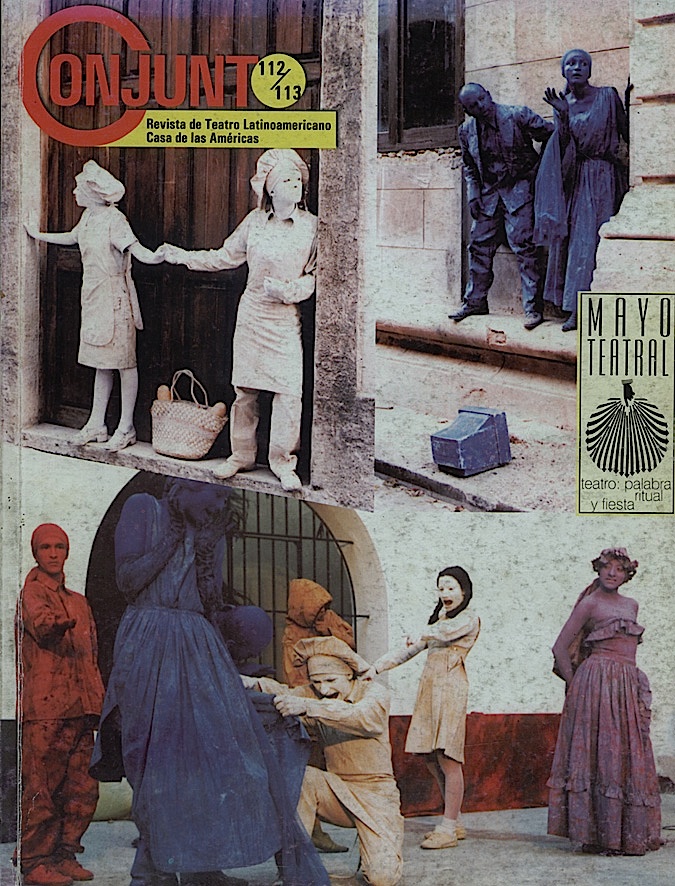Eugenio Valdés Figueroa
January – June 1999
From: Valdés Figueroa, Eugenio. “Reviva la revoltaire,” Conjunto, Revista de Teatro Latinoamericano, Casa de las Américas, n. 112-113, Enero-Junio, La Habana, Cuba, 1999, p. 55.
Reviva la Revoltaire
by Eugenio Valdés Figueroa
Although performances had not disappeared in Cuba, they were isolated gestures. Between 1988 and 1993, Tania Bruguera made a series of performances under the title of Rastros Corporales (Body Trails) as a tribute to Ana Mendieta’s work. Accompanied by photographic documentation of some sculptures of the Cuban-American artist, from that time on Bruguera’s work has followed the path of Mendieta’s resurrection. But I would say that more than an aesthetic appropriation by Tania Bruguera, we should talk about a spiritual splitting, because her art is an area where individual memory – hers and that of Mendieta – and allegoric reproduction of social, political, cultural or artistic circumstances and processes – marked by detachment, interruption and cleavage – jumble up.
For Bruguera, to enter into Mendieta’s aesthetic experience was to symbolically go through a separation from herself to penetrate the recesses of the other’s mind, only that in her case, just like in Mendieta’s, to be indissolubly linked to the place we were at one moment snatched away, is to be indissolubly linked to ourselves. Desire and sin are part of a single phenomenon, in Cuban popular formulation, to “eat dirt” is the last resort, but when Tania eats earth and salty water in her performance El peso de la culpa (The Weight of Blame), she is carrying out an act of anthropophagy implying a sort of Eucharist and the purifying consumption of herself and her work. Once again we are before a return to the womb, to earth, as in Mendieta. But this is a dialectic journey completed with the expiation of our punishment in our exile, as if a paradoxical circularity between desire and guilt were established. The ram hanging from her neck is at the same time guilt and a protecting shield. Subversion is then presented as an alternative survival ritual, as a semblance of acceptance, asa defense of inconformity, but in Ana Mendieta’s work the process as a finality is the basis of her entire work. That is why it is as if Tania’s work did not finish: every piece is continued in the following one.
With Art in America I put myself the place of the exiles, exile as a concept acquired new nuances for me. The topic of exile has been stigmatized with much rhetoric and much melodrama on homesickness. It has been a rhetoric built in both sides. The performance had as a starting point a series of connections on linguistics, on words and also on behavior systems, on the rituality generated in the circumstances of exile. Homeland means your country and is made up by two words, home and land. It could be said that homeland is theplace your home is. Homelessdenounces one of the most pressing problems in American society, the lack of home. I made a comparison between both words, but concentrating in some given patterns of conduct, in these definitions and switching their meaning, intercrossing attitudes. Homeless and exiles are individuals in the margins of society and also in the periphery of the official history of the places in which they intend to be included.
